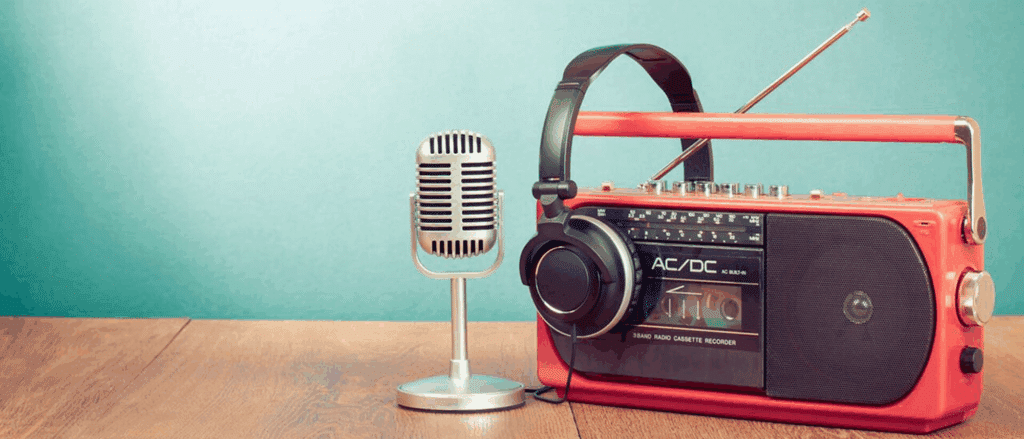Anúncios
The integration of AM/FM radio in cell phones was once a widespread feature that many users took for granted. Today, however, this functionality has become a rarity, leaving many to wonder why it was so common in the past and what led to its decline.
From the early days of mobile technology to its gradual disappearance, the story of radio-enabled phones reveals intriguing insights into consumer behavior, technological advancements, and market trends.
Anúncios
In this post, we’ll delve into the origins of AM/FM radios in mobile devices, exploring why manufacturers prioritized this feature and how it catered to the needs of users at the time.
Additionally, we’ll discuss the reasons behind its popularity during the early 2000s, the role it played in developing markets, and the eventual shift towards streaming services and other digital media alternatives.
Anúncios
By understanding the evolution of this once-essential feature, we can gain a clearer perspective on how the mobile industry adapts to changing consumer demands and technological progress.
Whether driven by nostalgia or curiosity, uncover the fascinating journey of AM/FM radio in cell phones and the factors that shaped its rise and fall.
The Hidden Origins of AM/FM Radio in Cell Phones
There was a time, not so long ago, when the idea of streaming music on your phone seemed as futuristic as flying cars. Yet, during that era, many mobile phones came equipped with an intriguing and now largely forgotten feature: an integrated AM/FM radio.
This seemingly simple addition had its own unique tale, rooted in practicality, technological innovation, and, perhaps, a touch of nostalgia. But why was it so common in the past? And why does it feel like it’s disappeared into the shadows of modern tech? To uncover the truth, we must first trace its origins.
Early Cell Phones and the Rise of Radio Connectivity
During the late 1990s and early 2000s, as mobile phones became smaller, sleeker, and increasingly popular, manufacturers sought to add features that would make their devices indispensable.
Enter the AM/FM radio. Unlike today’s obsession with streaming services and curated playlists, people of this era relied heavily on terrestrial radio to access music, news, and talk shows. The decision to integrate radio functionality into phones wasn’t just a nod to convenience; it was a calculated move.
For one, radio technology was already well-developed and inexpensive to implement. The hardware required to enable AM/FM signals was compact and didn’t significantly impact the size or cost of production for phones. This allowed manufacturers to appeal to a broader audience without driving up prices. Moreover, radio signals could reach areas where cellular networks struggled, making it an invaluable feature in remote or less developed regions.
But the appeal of radio went beyond mere practicality. It was a cultural staple. Radio had, for decades, been a unifying force, bringing people together to listen to chart-topping hits or breaking news. Its integration into mobile phones symbolized a merging of the old with the new, a bridge between the analog past and the digital future.
The Psychological Allure of Radio in Mobile Devices
There’s something inherently intimate about radio. The warmth of a DJ’s voice, the unpredictability of the next song, the thrill of live broadcasts—it all taps into a deep emotional connection. For many, the radio wasn’t just a source of entertainment; it was a companion. This psychological allure played a significant role in why phone manufacturers saw the value in embedding AM/FM tuners within their devices.
Connection Without the Need for Connectivity
One of the most fascinating aspects of radio is its independence from cellular data or internet connections. In an age where even the most basic apps now demand constant connectivity, this feature was a game-changer. It allowed users to stay informed and entertained without draining their data plans or dealing with spotty network coverage. For those living in areas with unreliable cellular infrastructure, it was often the only means of accessing up-to-date information during emergencies or natural disasters.
Additionally, radio’s low-energy consumption meant that users could tune in for hours without significantly impacting their battery life. This was a critical advantage during a time when battery technology was far less advanced than what we have today. The combination of accessibility, reliability, and low resource demands made AM/FM functionality a beloved feature for millions.
The Decline: What Happened to Radios in Modern Phones?
As we marvel at the sleek, app-laden devices of today, it’s hard not to wonder: where did all the radios go? The disappearance of this once-standard feature wasn’t due to a lack of interest or usefulness. Instead, its decline can be attributed to several interwoven factors that reflect the shifting priorities of both consumers and manufacturers.
Streaming Services and the Shift in Consumer Behavior
The rise of streaming platforms like Spotify, Apple Music, and Pandora marked a seismic shift in how we consume music and audio content. With millions of tracks available on demand, curated playlists tailored to individual tastes, and the ability to skip songs at will, streaming offered a level of personalization and control that traditional radio simply couldn’t match.
As consumer preferences gravitated towards these platforms, the demand for AM/FM functionality began to wane. Why tune in to a station playing a random assortment of songs when you could create your perfect playlist? The convenience and customization of streaming services effectively outshone the randomness and unpredictability of radio.
Simultaneously, the growing availability of high-speed internet and unlimited data plans reduced the appeal of offline entertainment options like radio. With fewer people relying on AM/FM broadcasts, manufacturers saw less incentive to include the feature in their designs, opting instead to prioritize hardware and software that supported internet-based media consumption.
The Silent Role of the Telecom Industry
But not all reasons for radio’s decline are tied to consumer choice. Behind the scenes, the telecom industry also played a subtle yet significant role in steering the future of mobile devices away from radio functionality.
Profit Motives and Strategic Omissions
It’s no secret that telecom providers generate significant revenue from data usage. As streaming services grew in popularity, they presented an opportunity for providers to encourage higher data consumption, leading to more expensive plans and greater profits. By promoting internet-based entertainment over free, offline alternatives like radio, the telecom industry created a system where consumers were nudged—whether knowingly or not—towards options that benefited the providers’ bottom lines.
Interestingly, many modern smartphones still have the hardware capabilities to support AM/FM radio. However, these features are often disabled by manufacturers or carriers, either for cost-cutting purposes or to align with the telecom industry’s push towards data-driven services.
This strategic omission has contributed to the gradual disappearance of radio from the mobile landscape, leaving behind a sense of nostalgia for those who once relied on it.
Is There a Future for Radio in Mobile Phones?
As we reflect on the rise and fall of AM/FM functionality in cell phones, it’s natural to wonder: could it ever make a comeback? While the answer remains uncertain, there are compelling arguments both for and against the reintroduction of this feature.
Emerging Trends and a Renewed Appreciation for Simplicity
In recent years, there’s been a growing movement towards digital minimalism—a rejection of the constant connectivity and sensory overload that defines modern technology. For some, this has sparked a renewed appreciation for simpler, more analog experiences, including traditional radio.
Devices that embrace this philosophy, such as feature phones or minimalist smartphones, often include radio functionality as a nod to practicality and nostalgia.
Moreover, the role of radio during emergencies cannot be understated. In regions prone to natural disasters or infrastructure failures, AM/FM broadcasts remain a lifeline, capable of disseminating critical information when other communication methods falter.
Advocates for the inclusion of radio in phones argue that it’s not just a convenience but a necessity, particularly in a world increasingly vulnerable to climate-related crises.
On the flip side, the ever-evolving landscape of technology presents challenges. As 5G networks expand and streaming services become even more ingrained in our daily lives, the demand for offline alternatives like radio may continue to dwindle. Manufacturers must weigh the cost and complexity of including AM/FM functionality against the perceived value it offers to consumers.
For now, it seems the story of radio in mobile phones remains as unpredictable as the medium itself—a tale of innovation, nostalgia, and the inexorable march of progress.

Conclusion: Reflecting on the Evolution of AM/FM Radio in Cell Phones
The story of AM/FM radio integration in cell phones is a fascinating journey through the evolution of technology, culture, and consumer behavior.
Once a defining feature of mobile devices in the late 1990s and early 2000s, this functionality was born from practicality and innovation. It offered users access to music, news, and emergency information without relying on cellular networks or data connectivity.
Radio’s low-energy consumption and affordability made it a practical and cherished addition for millions, especially in regions with limited infrastructure.
However, as technology advanced, the rise of streaming platforms like Spotify and Apple Music dramatically reshaped how we consume audio content. The convenience of personalized playlists, coupled with the proliferation of high-speed internet, gradually diminished the demand for traditional radio.
Moreover, the telecom industry’s strategic push towards data-driven services further contributed to the decline of AM/FM functionality in modern smartphones.
While the feature has largely faded from today’s devices, its legacy endures, serving as a reminder of an era when simplicity and accessibility were paramount. In a world increasingly dominated by constant connectivity, the nostalgia for radio persists, with some minimalist devices embracing its charm.
As technology continues to evolve, the question remains: will AM/FM radio find its way back into our pockets? Only time will tell, but its impact on the history of mobile phones is undeniable.
Toni Santos is a visual storyteller and artist whose creations celebrate the poetry of handmade communication. Through a thoughtful and symbolic lens, Toni transforms letters, envelopes, stamps, and recycled papers into meaningful expressions of connection, resistance, and timeless artistic beauty.
His journey is rooted in a fascination with the tangible messages that travel across distance and memory. From a vintage stamp to a hand-stitched envelope, each piece Toni creates carries a deeper visual narrative — one of emotion, silence, politics, and accessible art. His work evokes the quiet power of paper in a digital age, where ink smudges and folds speak volumes.
With a background in visual design and handcrafted collage, Toni blends technique with emotion. His creations do more than decorate — they communicate, often inspired by untold stories, independent zines, personal archives, and the marks left by time.
As the creative voice behind Vizovex, Toni shares this postal journey with the world, offering visual stories, unique handcrafted collections, and thoughtful articles that help revive the symbolic essence of Mail Art — one envelope, one gesture, one memory at a time.
His work is a tribute to:
The silent power of letters and what they reveal
The beauty of art made to travel between unknown hands
The urgency to preserve time through a stamp, a fold, a collage
Whether you’re an artist, a collector, or someone who misses the texture of paper as a vessel of meaning, Toni invites you to explore a space where art meets memory — letter by letter, gesture by gesture, connection by connection.





